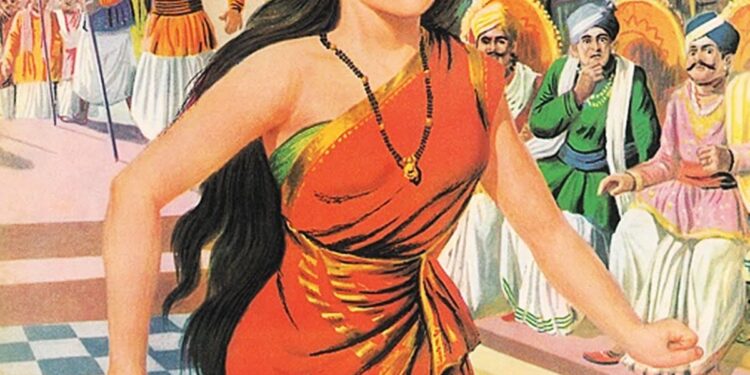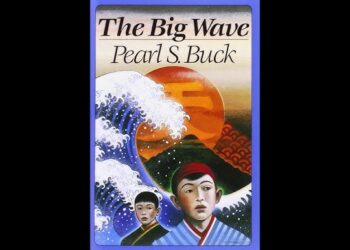Note on akam and puram poetry in Cilappatikaran. Cilappatikaram, also known as ‘The Tale of an Anklet’, is an ancient Tamil epic written by a Jain monk and scholar named Ilango Adigal. This renowned epic is one of the five Great Epics in Tamil literature, and it is notably one of the earliest and greatest works in Tamil literature. Ilango Adigal is believed to have lived around the 1st or 2nd century CE, and he is often considered one of the greatest figures in Tamil literary history. Write a detailed note on akam and puram poetry in Cilappatikaran.
Ilango Adigal, the author of Cilappatikaram, was not just a writer but also a visionary. He used the power of his narrative to showcase a society deeply rooted in cultural and moral values. His epic tale was not just an exposition of human emotions, but it also subtly put forth profound observations about societal norms, ethics, and morality.
As the prince-turned-monk, Ilango Adigal belonged to the Chera dynasty, one of the three main dynasties that ruled ancient Tamilakam, today’s Tamil Nadu and Kerala. His royal lineage and monastic life offered him a unique perspective, which he weaved into his creation. Cilappatikaram is thus a reflection of both his worldly wisdom and spiritual insights.
Write a detailed note on akam and puram poetry in Cilappatikaran.
The narrative of Cilappatikaram revolves around a husband and wife, Kovalan and Kannagi. After a twist of fate involving a stolen anklet, Kovalan is unjustly executed by the king of Madurai. Devastated by her husband’s death, Kannagi seeks justice and ends up destroying the entire city of Madurai.
This celebrated piece of literature has been instrumental in shaping the literary traditions of Tamil poetry, particularly through its unique incorporation of two distinct forms of poetry: Akam and Puram. These two genres or modes of expression represent two different sets of themes and scenarios, i.e., the inner (akam) and the outer (puram) experiences. Write a detailed note on akam and puram poetry in Cilappatikaran.
Akam Poetry
The Akam (literally meaning “inside” or “interior”) form of poetry in Cilappatikaram is representative of personal, domestic, and intimate aspects of life. It mainly focuses on love and the intricate relationship dynamics between men and women. The protagonists’ emotions, their personal turmoil, joy, sadness, love, and passion form the essence of Akam poetry.
Akam employs the metaphorical language of love, often set within the context of a natural landscape. Each landscape (referred to as ‘thinai’ in Tamil) is symbolic of certain emotions and moods in love. For example, Kurinji (mountainous regions) symbolizes union, while Palai (dry desert land) symbolizes separation.
A vivid example of Akam poetry is found in the scenes between Kovalan and Kannagi, the central characters of Cilappatikaram. Their intimate moments, the bliss of their conjugal life, and their anguish during separation are all narrated through the Akam mode of poetry.
For instance, when Kovalan leaves Kannagi to be with Madhavi, the courtesan, the inner turmoil of Kannagi is expressed through the landscape of Palai:
“Her eyes, once filled with the warmth of love, now resemble the barren lands of Palai, robbed of the nourishing monsoon rains.”
Puram Poetry
On the contrary, the Puram (literally meaning “outside” or “exterior”) form of poetry deals with themes related to public life, such as war, valor, ethics, statecraft, society, and public ceremonies. The focus here is on the societal duties and responsibilities of the characters, their heroism, honor, and public conduct.
Puram doesn’t typically use nature as a metaphor for emotions, instead it narrates situations as they are, in a more direct and straightforward manner. Elements such as the hero’s bravery, the valorous deeds in the battlefield, the lament of the war widows, and the glorification of the king’s generosity, form the core of Puram poetry.
The Puram tradition in Cilappatikaram is evident in the scenes depicting Kovalan’s public trials and tribulations, his accusation of theft, and the grave injustice meted out to him, leading to his execution. Also, the subsequent public wrath of Kannagi, which resulted in the burning of the city of Madurai, is narrated in the Puram mode of poetry.
One striking example of Puram poetry from the text is the depiction of Kovalan’s unfortunate execution:
“The city echoed with the dreadful beat of the death drum, announcing the end of an innocent life, cut short by the sword of injustice.”
Harmonious Fusion of Akam and Puram
Cilappatikaram, by its very structure, seamlessly harmonizes the principles of Akam and Puram poetry. This is achieved through the interplay of characters, situations, and landscapes that are fluid and interchanging. The characters of Kovalan and Kannagi experience love, separation, and reunion, indicative of the Akam genre, but they also participate in social and public life, thereby venturing into the realm of Puram.
The versatile character of Kannagi, for instance, embodies both Akam and Puram. As a devoted wife, her life is steeped in the Akam landscape, but when faced with the brutal injustice of her husband’s execution, she steps into the Puram landscape of societal norms, ethics, and justice. Her transformation from a dutiful wife to a fearless avenger who brings a whole city to ruins is an embodiment of the seamless interplay between the private (Akam) and the public (Puram).
Impact and Influence
The influence of Akam and Puram poetry in Cilappatikaram extends beyond mere representation of life. They serve as a powerful literary tool, helping the poet to deliver moral and ethical messages effectively. The consequences faced by characters due to their actions in both private and public spheres are often cautionary tales about the importance of righteousness, justice, and personal integrity.
These poetic styles significantly contribute to the cultural identity of the Tamils, encapsulating their emotions, ethos, and values. The intertwining of love with nature in Akam, and the portrayal of societal virtues and heroism in Puram, create a culturally rich and complex narrative that resonates with the Tamil ethos.
The beauty of Cilappatikaram lies in its successful blending of Akam and Puram, interwoven in a single narrative. This is perhaps best illustrated in the sequence of events following Kovalan’s death. Kannagi’s personal loss and anguish (Akam) translates into her righteous fury, causing the destruction of Madurai (Puram).
An example of this blend is seen in the following lines:
“The anklet’s echo had barely faded, lost in the distant mountains, but its silence echoed a woman’s wail, transforming her private grief into a public outcry.”
Reflection of Society
Akam and Puram in Cilappatikaram also offer insightful reflections of society, mirroring the ethos, values, and conventions of ancient Tamil civilization. They present a vibrant canvas of ordinary people’s lives, loves, and losses, and the societal constructs in which these individual narratives are played out.
The representation of different landscapes in Akam poetry – like the forests, the mountains, the agricultural fields, and the deserts – reflect various facets of society and economy, such as the occupations and lifestyle of people. Puram poetry, with its focus on valor, honor, ethics, and statecraft, provides an understanding of the political and social dynamics of the era.
Cilappatikaram, through Akam and Puram, thus takes us on a journey into the heart of an ancient civilization, giving us a vivid portrayal of its social, economic, and cultural fabric. This harmonious blend of Akam and Puram makes Cilappatikaram a timeless epic, serving as a window to the past while continually resonating with the present.
Conclusion
The integration of Akam and Puram poetry in Cilappatikaram is not just an artistic embellishment, but it offers a comprehensive view of ancient Tamil society. While Akam presents an interior view of individual emotions, Puram brings forth the broader societal context in which these individuals operate. Both these forms coexist, not as binaries, but as mutually inclusive domains that offer a nuanced understanding of the characters and their surroundings.
Cilappatikaram serves as a magnificent canvas, where the Akam and Puram traditions come together to create a dynamic and vibrant image of an era, its people, their love, their sorrow, and their societal interactions. These poetic traditions allow readers to transcend time, offering them a glimpse into the rich cultural and emotional tapestry of ancient Tamil society.
Important Questions
- How do the Akam and Puram forms of poetry contribute to the overall narrative of Cilappatikaram?
- Discuss the role of different landscapes (thinai) in Akam poetry in Cilappatikaram. How do they reflect the emotional state of the characters?
- How do the principles of Akam and Puram poetry interplay in Cilappatikaram? Give specific examples from the text.
- Discuss the character of Kannagi with respect to the Akam and Puram genres of poetry. How does her character embody these two distinct forms?
- How does Cilappatikaram, through Akam and Puram poetry, reflect the social, cultural, and economic aspects of ancient Tamil society?
- How does Puram poetry in Cilappatikaram highlight societal values, ethics, and norms of the time? Give examples from the text.
- How does the fusion of Akam and Puram in Cilappatikaram contribute to its timeless relevance and enduring appeal?
- Discuss how the Akam form of poetry in Cilappatikaram communicates deep personal emotions and relationships.
Write a detailed note on akam and puram poetry in Cilappatikaran.

















